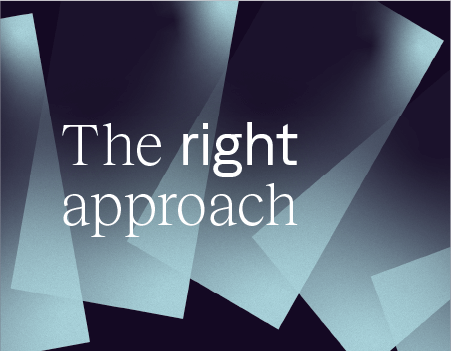
How a greenfield approach puts banks at the centre of embedded finance

As the digital transition has accelerated, the vision of widespread embedded finance has become a very real possibility. And far from being left out, banks can play a leading role in making it happen – if they take the right approach.
Covid-19 has injected a new urgency into the slow and steady pace of digital banking transformation. And as the world looks ahead to the new normal post-pandemic, reshaping financial services to better serve the needs of the market will be vital.
We live in a digital age, and people want their banks to be integrated seamlessly into their activities – both online and offline. According to recent McKinsey research, up to 85% of Western European consumers, even those aged over 65, now prefer to use digital for everyday transactions.
They’re in luck. From mobile apps to artificial intelligence and analytics, banks and fintechs have very nearly succeeded in making financial services ubiquitous.
The next step will be to make them invisible, by embedding them into day-to-day life so customers can achieve their goals seamlessly.
We (still) need banks
We’re starting to see it happen already. From Amazon loans to Apple Pay, point solutions are emerging that streamline financial processes, bridging the gaps between consumers, the companies they buy from, and the finance they require.
So far, progress has been led by tech firms. But despite the headlines about disruption in financial services, banks still have a series of advantages over other players.
First of all, they have the reach. Banks have significant client bases covering a huge swathe of customer segments. During the pandemic, government support schemes to small businesses were channelled through banks for a reason: they are the only ones who can get finance to where it’s needed.
Secondly, they have the experience. While it’s true that fintech companies can offer one or two products that outstrip the incumbents in terms of efficiency and customer experience, banks have deep product and industry knowledge, as well as hefty balance sheets and direct access to cost-efficient capital.
And thirdly, banks are established brands who are already approved by governments and regulators. They’re subject to safeguards that ensure customer capital won’t be lost, and they have to abide by rules around responsible lending. In short, they have trust.
The case for a greenfield approach
However, as the future state of embedded finance comes ever closer, banks risk being left behind by disruptors unless they quickly rethink the way they operate. With a few notable exceptions, such as Goldman Sachs or JP Morgan, banks simply aren’t ready to plug in to the ecosystems that underlie all of their customers’ day-to-day needs. Today, more than ever, consumers demand seamless, simple interactions, with their bank acting as their financial intermediary across the entire digital ecosystem.
The biggest roadblock is technological innovation. Approximately two-thirds of bank tech spend goes not on new projects, but on maintaining legacy infrastructure. And when banks do spend money on new solutions, it’s usually to solve a single specific need rather than to spark the creation of an entirely new system. And that is because transforming the entire technology stack of a corporate bank is painfully slow, extremely expensive, and would take several years.
A fresh start
To stay in the running when it comes to driving the next step of the digital revolution, banks need to break free of their legacy systems and operations and leverage their expertise, compliance, and balance sheet.
Instead of the default technological transformation pathway, which involves designing and building everything themselves, a greenfield build can link together banks’ expertise to their customer’s aspirations via the ability of complementary third parties, while still remaining under the control of the regulated institution.
In this way, banks act as platform facilitators, and the opportunities for co-creation are enormous. By combining the incumbent’s advantages with the agility and flexibility of a customer-centric, cost-efficient, API-driven system, a bank can enable compelling solutions to be created quickly and delivered directly to their own ready-made client base.
What’s more, putting data and analytics at the centre and breaking down monolithic legacy systems into modular services means that banks can get a granular understanding of customer needs and create rich and differentiated propositions that can then be integrated through APIs, laying the foundations for a truly seamless customer experience.
Serving real life customers instead of personas
Banks collecting payments on behalf of merchants can provide real time statements, gig economy workers can have their money disbursed immediately into a virtual wallet, and the underlying system can record all of those transactions and events the moment they happen, and publish them to any other element, from a personal finance manager to Siri.
And because everything is connected, banks can also tap their operational capabilities to find adjacencies that better meet their customers’ needs, leading to more profitability as well as increased stickiness for the institution. All of this allows banks to get back to being trusted advisors to their retail, business and corporate banking customers, while supporting them invisibly in their interactions with companies, suppliers, and clients.
The time is now
The world is undergoing a period of unprecedented volatility. Banks face numerous challenges to their position, from the upcoming Basel III implementation to the need to de-risk in the current turbulent economic environment. While it may be tempting for banks to retrench, the Covid-19 crisis offers an opportunity for incumbents to take stock and begin to future-proof the financial services industry for the new normal.
The embedded financial services system of the future will support the real economy and provide an enabling environment for businesses to grow and prosper. To make it happen, now is the time for banks to take a greenfield approach to digital transformation.
The tools are there. All it takes is the will.
The article was initially published in AltFi’s Digital Banking State of the Market Report 2020. Download your copy of the report.

